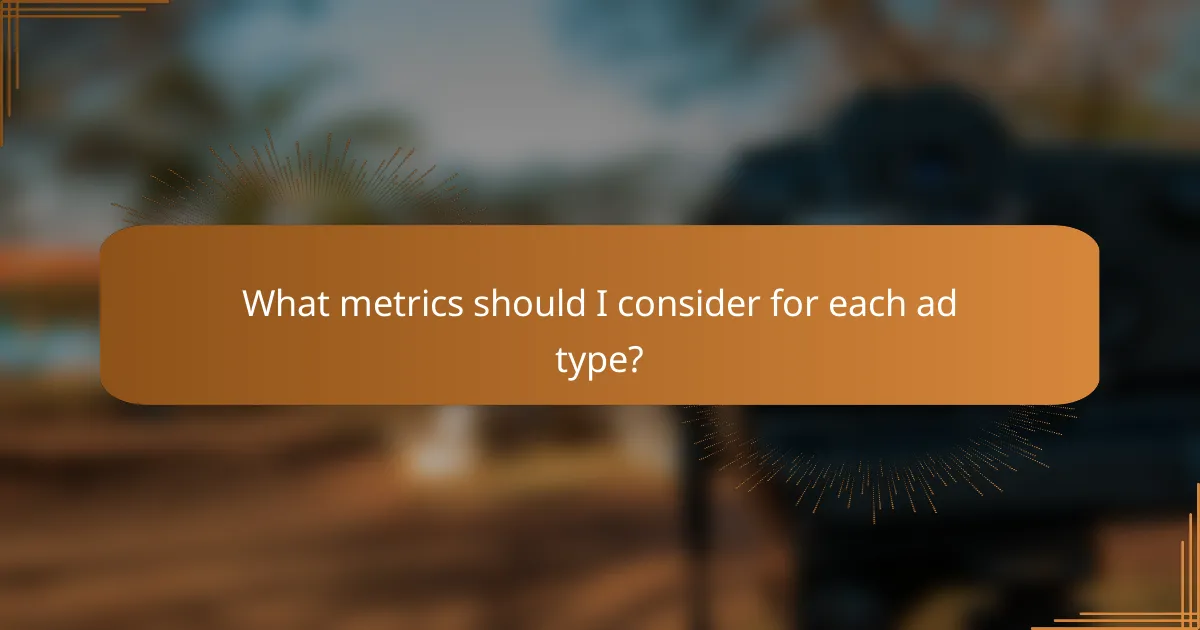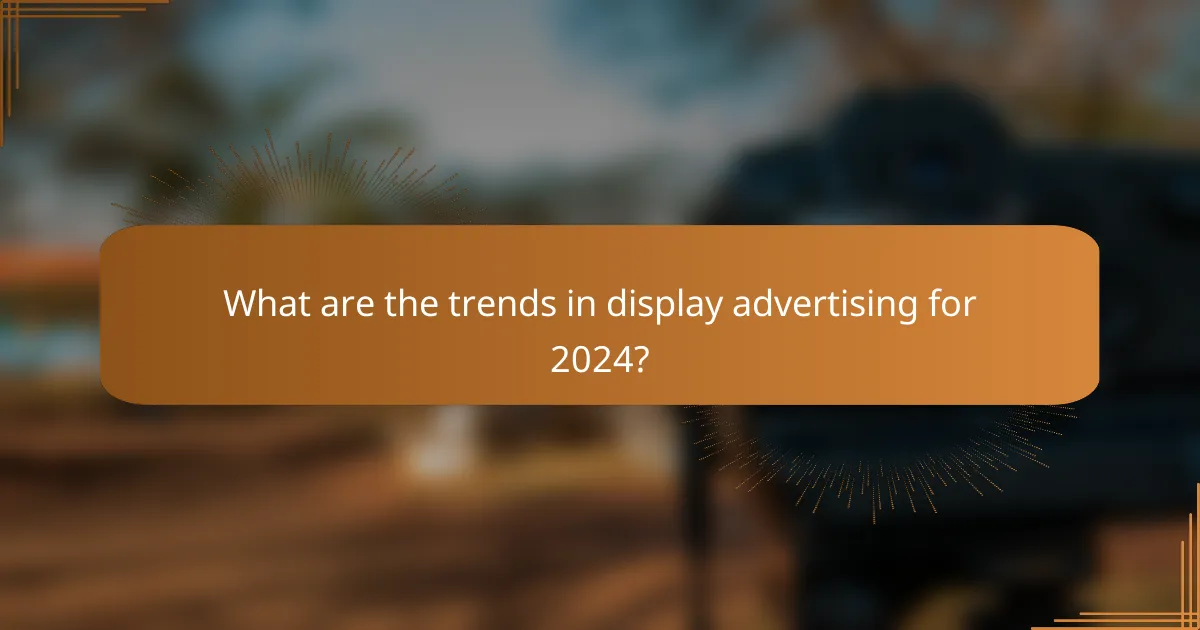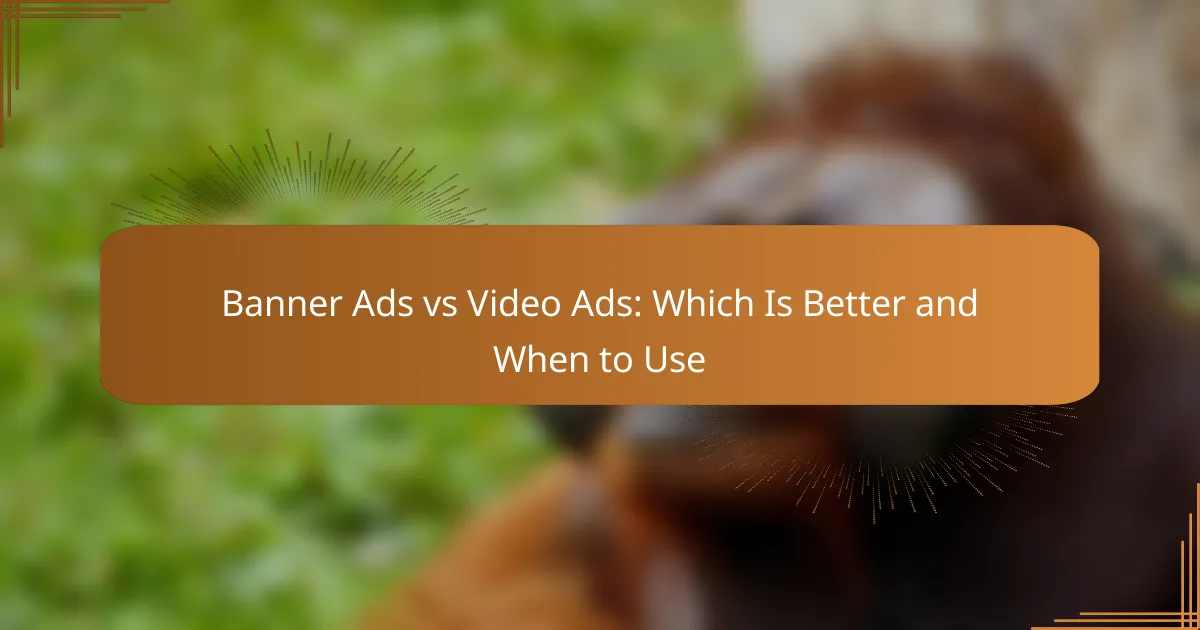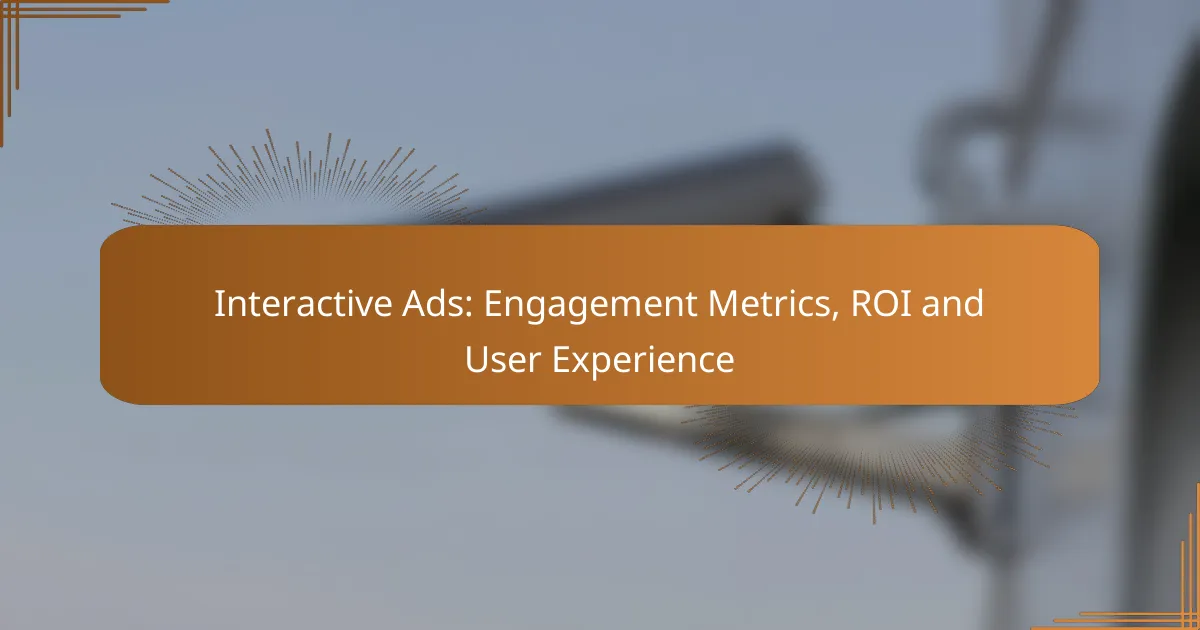When deciding between banner ads and video ads, understanding their unique strengths is essential for maximizing campaign effectiveness. Banner ads are ideal for increasing visibility and driving traffic, making them suitable for brand awareness and retargeting efforts. In contrast, video ads excel in engaging audiences with dynamic content, making them perfect for storytelling and showcasing products on visually-driven platforms.

Which advertising format is more effective in major US markets?
In major US markets, the effectiveness of banner ads versus video ads largely depends on campaign goals and target audiences. Banner ads typically excel in visibility, while video ads are known for driving higher engagement rates.
Banner ads offer high visibility
Banner ads are designed to capture attention quickly, often appearing at the top or sides of web pages. Their high visibility makes them suitable for brand awareness campaigns, where the goal is to reach a broad audience. Advertisers can leverage eye-catching designs and strategic placements to maximize exposure.
For optimal results, consider using bright colors and clear calls to action. A/B testing different designs can help identify which banners resonate best with your audience. Generally, banner ads can achieve click-through rates in the low single digits, depending on the industry.
Video ads enhance engagement
Video ads tend to foster deeper engagement by combining visual storytelling with audio elements. They are particularly effective on social media platforms and streaming services, where users are more likely to watch content. Engaging narratives or entertaining visuals can significantly increase viewer retention and interaction.
To maximize engagement, keep video ads concise, ideally under 30 seconds, and ensure they convey the message quickly. Incorporating interactive elements, such as polls or clickable links, can further enhance viewer involvement. Engagement rates for video ads can often reach double digits, making them a powerful tool for targeted campaigns.
Cost-effectiveness varies by campaign
The cost-effectiveness of banner and video ads can fluctuate based on several factors, including the platform used, audience targeting, and overall campaign objectives. Banner ads typically have lower production costs and can be more affordable for brands with limited budgets. However, video ads may yield better returns on investment through higher engagement and conversion rates.
When planning your budget, consider the potential reach and effectiveness of each format. For example, if your goal is brand awareness, banner ads may suffice. Conversely, for campaigns focused on conversions, investing in video ads could be more beneficial. Always analyze performance metrics to adjust your strategy accordingly.

When should I use banner ads?
Banner ads are best used when you want to increase visibility and drive traffic to your website. They are particularly effective for brand awareness and retargeting strategies, allowing you to reach specific audiences with tailored messages.
Best for brand awareness campaigns
Banner ads excel in brand awareness campaigns by providing a visual presence across various websites. They can help establish brand identity and recognition, especially when placed on high-traffic sites relevant to your target audience.
To maximize effectiveness, use eye-catching designs and clear messaging. Consider using a mix of static and animated banners to engage users. Aim for placements on sites that align with your brand values and audience interests.
Effective for retargeting strategies
Retargeting with banner ads allows you to re-engage users who have previously visited your site but did not convert. This strategy keeps your brand top-of-mind and encourages potential customers to return and complete their purchase.
Implement retargeting by using cookies to track user behavior and display relevant ads based on their previous interactions. Focus on creating personalized messages that address their interests or previous products viewed, which can significantly improve conversion rates.

When should I use video ads?
Video ads are best used when you want to engage your audience with dynamic content that conveys a message effectively. They are particularly useful for showcasing products, telling stories, or capturing attention on platforms where visual impact is crucial.
Ideal for storytelling and product demos
Video ads excel in storytelling and product demonstrations, allowing brands to create emotional connections with viewers. A well-crafted narrative can enhance brand recall and foster customer loyalty, making it easier to convey complex ideas or showcase product features in action.
For example, a two-minute video can illustrate how a kitchen gadget works, demonstrating its benefits in a real-life scenario. This approach can significantly increase engagement compared to static images or text.
Effective for social media platforms
Video ads are particularly effective on social media platforms, where users are accustomed to consuming video content. Platforms like Instagram, Facebook, and TikTok prioritize video in their algorithms, often leading to higher visibility and engagement rates.
When creating video ads for social media, keep them short and engaging, ideally under 30 seconds. This length caters to the quick-scrolling behavior of users and maximizes the chances of capturing their attention before they move on.

What are the key differences between banner ads and video ads?
Banner ads are typically static or animated graphics displayed on websites, while video ads are dynamic content that plays automatically or on user interaction. The choice between them depends on your marketing goals, target audience, and the context in which the ads will be shown.
Banner ads are static or animated
Banner ads can be either static images or animated graphics that capture attention without sound. They are often used for brand awareness and can be placed on various websites, making them versatile for reaching a broad audience.
When designing banner ads, consider the size and format that best fits your target platform. Common sizes include 300×250 pixels and 728×90 pixels. Keep the message clear and concise, as users typically glance at these ads quickly.
Video ads are dynamic and immersive
Video ads provide a more engaging experience by combining visuals, sound, and storytelling. They can be played before, during, or after video content on platforms like YouTube or social media, making them effective for conveying complex messages.
When using video ads, aim for a duration of 15 to 30 seconds to maintain viewer interest. Ensure that the first few seconds are captivating to prevent viewers from skipping. Additionally, consider the platform’s audience and tailor the content accordingly to maximize impact.

How do costs compare between banner ads and video ads?
Costs for banner ads are generally lower than for video ads, making them a more budget-friendly option for advertisers. However, the choice between the two depends on campaign goals, target audience, and the desired impact.
Banner ads typically have lower CPM
Banner ads usually feature a lower cost per thousand impressions (CPM), often ranging from a few dollars to low tens of dollars. This affordability allows businesses, especially small and medium-sized enterprises, to reach a wider audience without significant financial strain.
When considering banner ads, it’s essential to evaluate placement and design, as these factors can influence effectiveness. Well-designed banners on high-traffic websites can yield better engagement rates, maximizing the value of the lower CPM.
Video ads often require higher production budgets
Video ads typically demand a higher production budget, often starting from hundreds to thousands of dollars, depending on the complexity and quality of the content. This investment includes costs for scripting, filming, editing, and potentially hiring actors or voiceover talent.
While video ads can be more expensive, they often deliver higher engagement and conversion rates. Brands should weigh the initial costs against potential returns, especially if targeting platforms where video content is favored, such as social media or streaming services.

What metrics should I consider for each ad type?
When evaluating banner ads and video ads, key metrics to consider include click-through rates (CTR) for banner ads and view-through rates (VTR) for video ads. These metrics help determine the effectiveness of each ad type in engaging the audience and driving conversions.
Click-through rates for banner ads
Click-through rates for banner ads measure the percentage of users who click on the ad after viewing it. A typical CTR for banner ads can range from 0.05% to 0.5%, depending on factors like ad placement, design, and audience targeting. Higher CTRs often indicate more compelling visuals and messaging.
To improve CTR, ensure your banner ads are visually appealing and relevant to your target audience. A/B testing different designs and calls to action can help identify what resonates best. Avoid cluttered designs, as they can distract users and lower engagement.
View-through rates for video ads
View-through rates for video ads indicate the percentage of viewers who watch the ad to completion or a significant portion of it. Typical VTRs can vary widely but often fall between 15% and 50%, influenced by the ad’s length and content quality. Engaging storytelling and clear messaging can enhance viewer retention.
To maximize VTR, keep video ads concise and captivating, ideally under 30 seconds. Utilize compelling hooks in the first few seconds to grab attention. Additionally, consider the platform’s audience and tailor content accordingly to improve viewer engagement and retention.

What are the trends in display advertising for 2024?
In 2024, display advertising is increasingly focusing on personalization, interactivity, and video integration. Advertisers are leveraging data analytics to create tailored experiences that resonate with specific audiences, enhancing engagement and conversion rates.
Increased Use of AI and Automation
Artificial intelligence (AI) and automation are transforming display advertising by optimizing ad placements and targeting. These technologies analyze user behavior and preferences to deliver more relevant ads, which can lead to higher click-through rates and improved ROI.
For example, programmatic advertising platforms use AI to automate the buying process, allowing advertisers to reach their target audience in real-time. This shift not only saves time but also increases efficiency in ad spend.
Focus on Mobile-First Strategies
As mobile usage continues to rise, advertisers are prioritizing mobile-first strategies in display advertising. This means designing ads specifically for mobile devices, ensuring they are visually appealing and easy to interact with on smaller screens.
Responsive design is crucial, as it allows ads to adapt to various screen sizes. Advertisers should consider using vertical video formats and concise messaging to capture attention quickly on mobile platforms.
Emphasis on Video Content
Video content is becoming a dominant force in display advertising, with many brands opting for video ads to engage users more effectively. Video ads can convey messages quickly and are often more memorable than static images.
Short-form videos, such as those found on social media platforms, are particularly effective. Advertisers should aim for videos that are under 30 seconds to maintain viewer interest and encourage shares.
Enhanced Privacy Regulations
With growing concerns over user privacy, regulations are tightening around data collection and usage in display advertising. Advertisers must navigate these changes carefully to ensure compliance while still delivering effective campaigns.
Staying informed about regulations like the GDPR in Europe or the CCPA in California is essential. Advertisers should prioritize transparency and user consent in their data practices to build trust and maintain a positive brand image.

